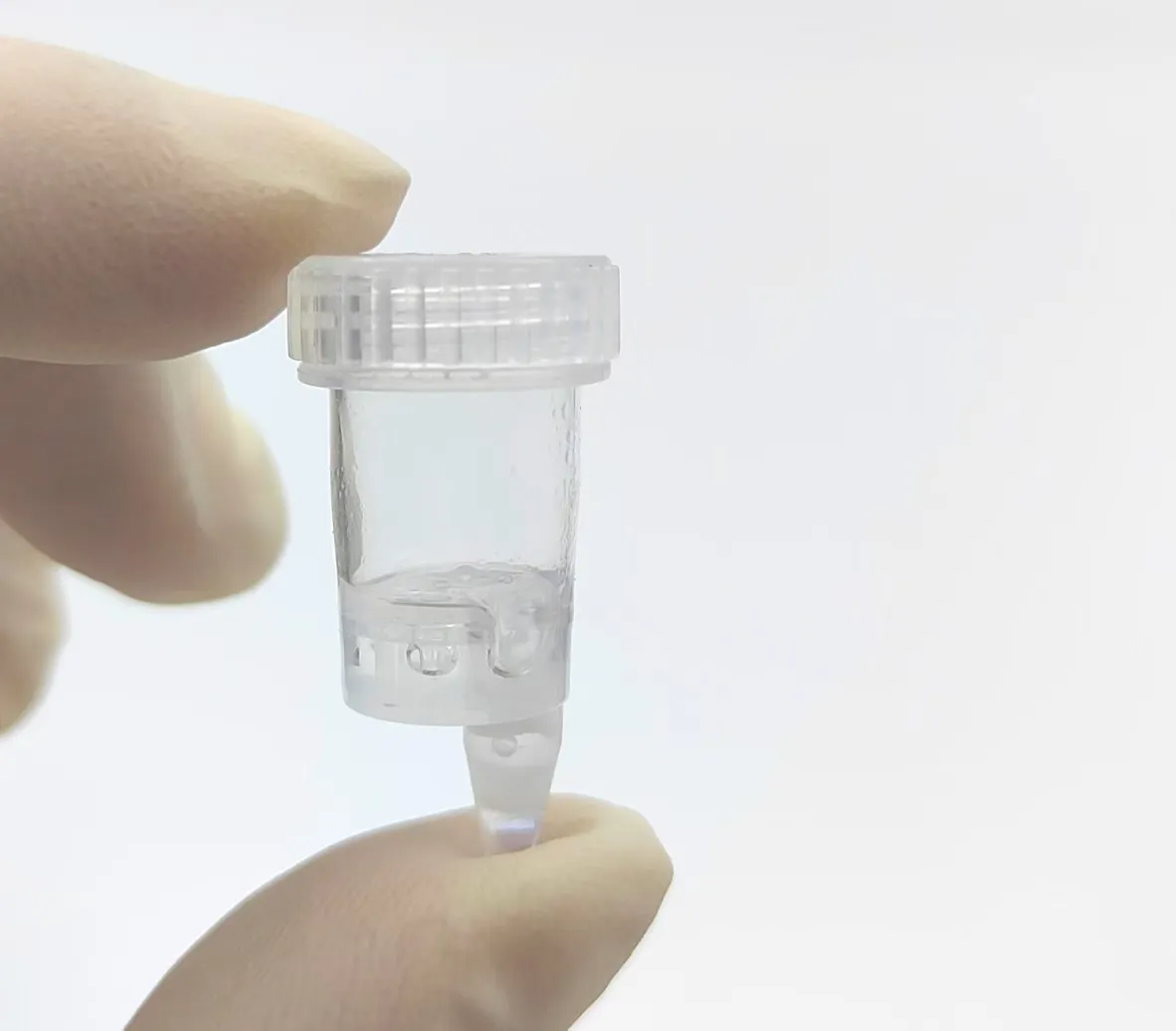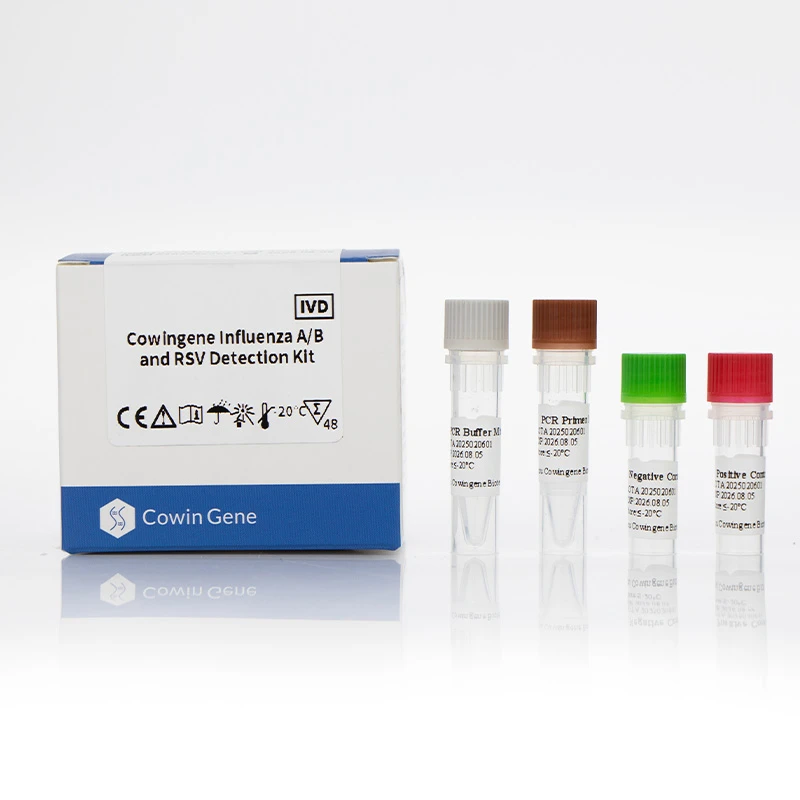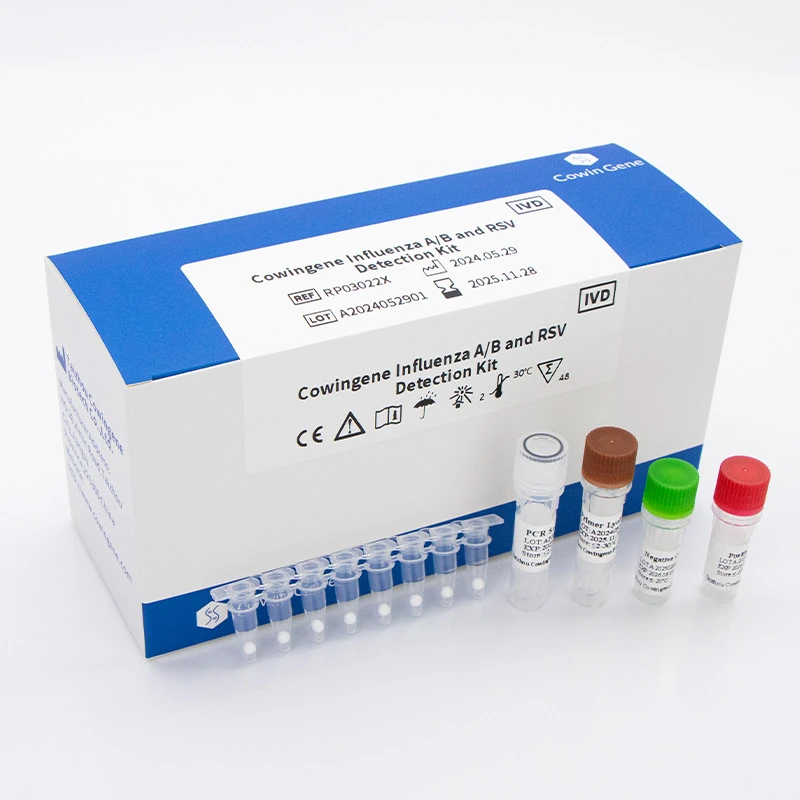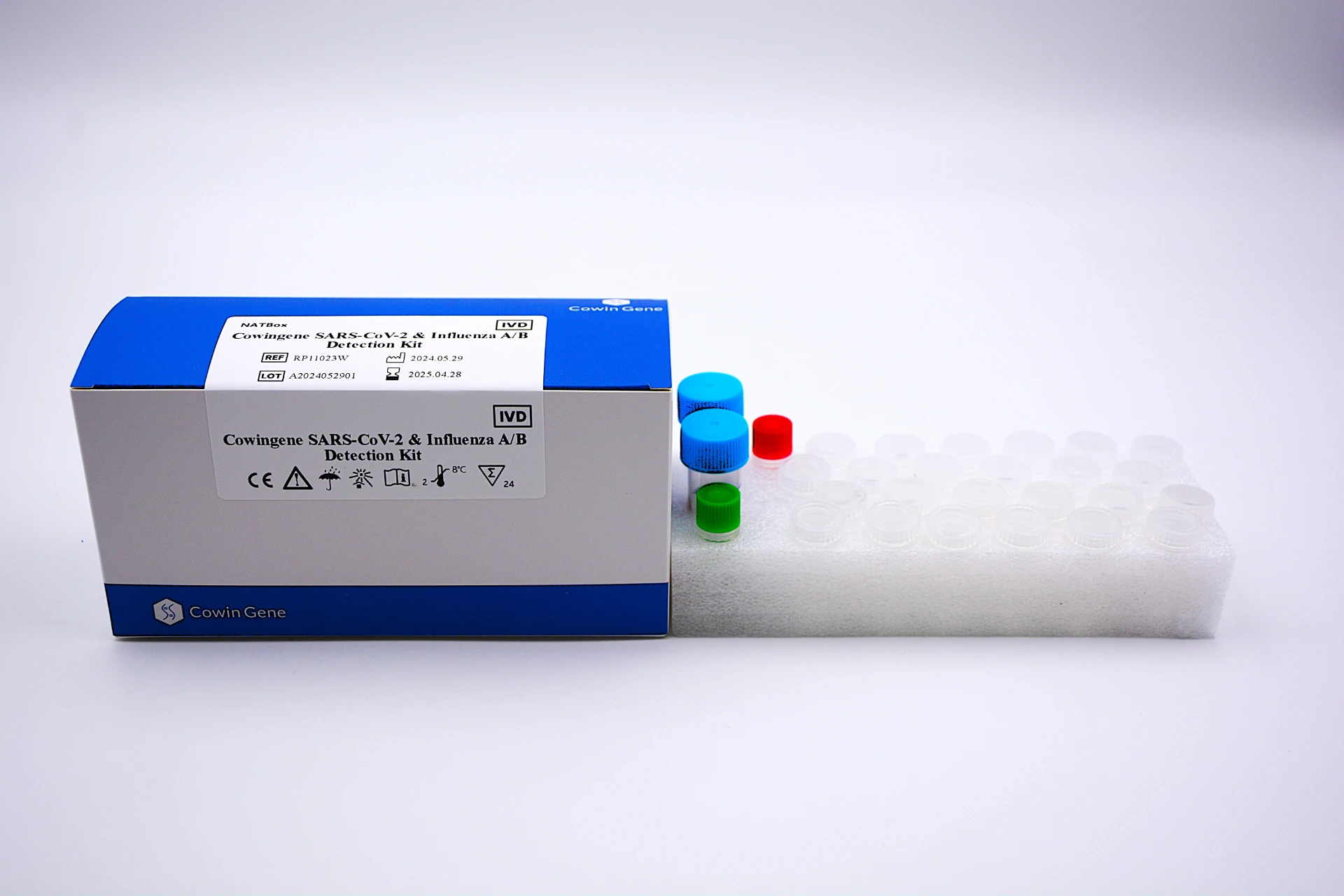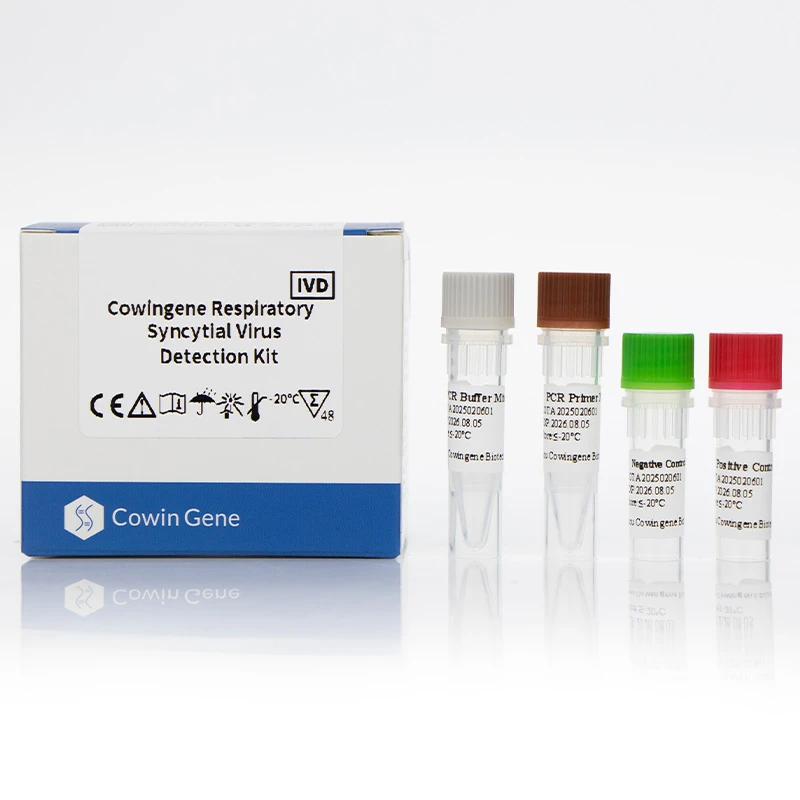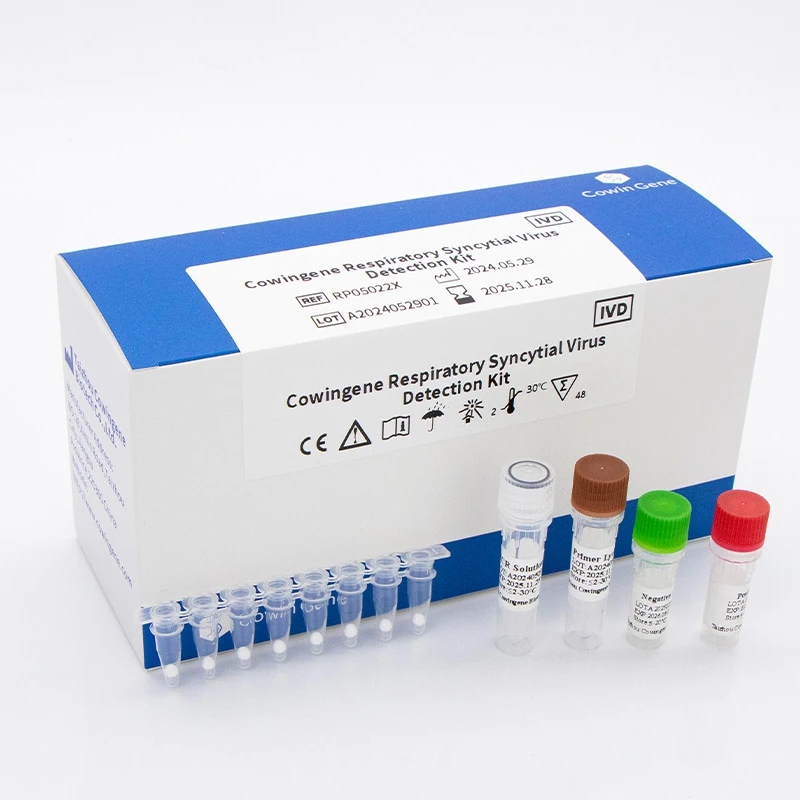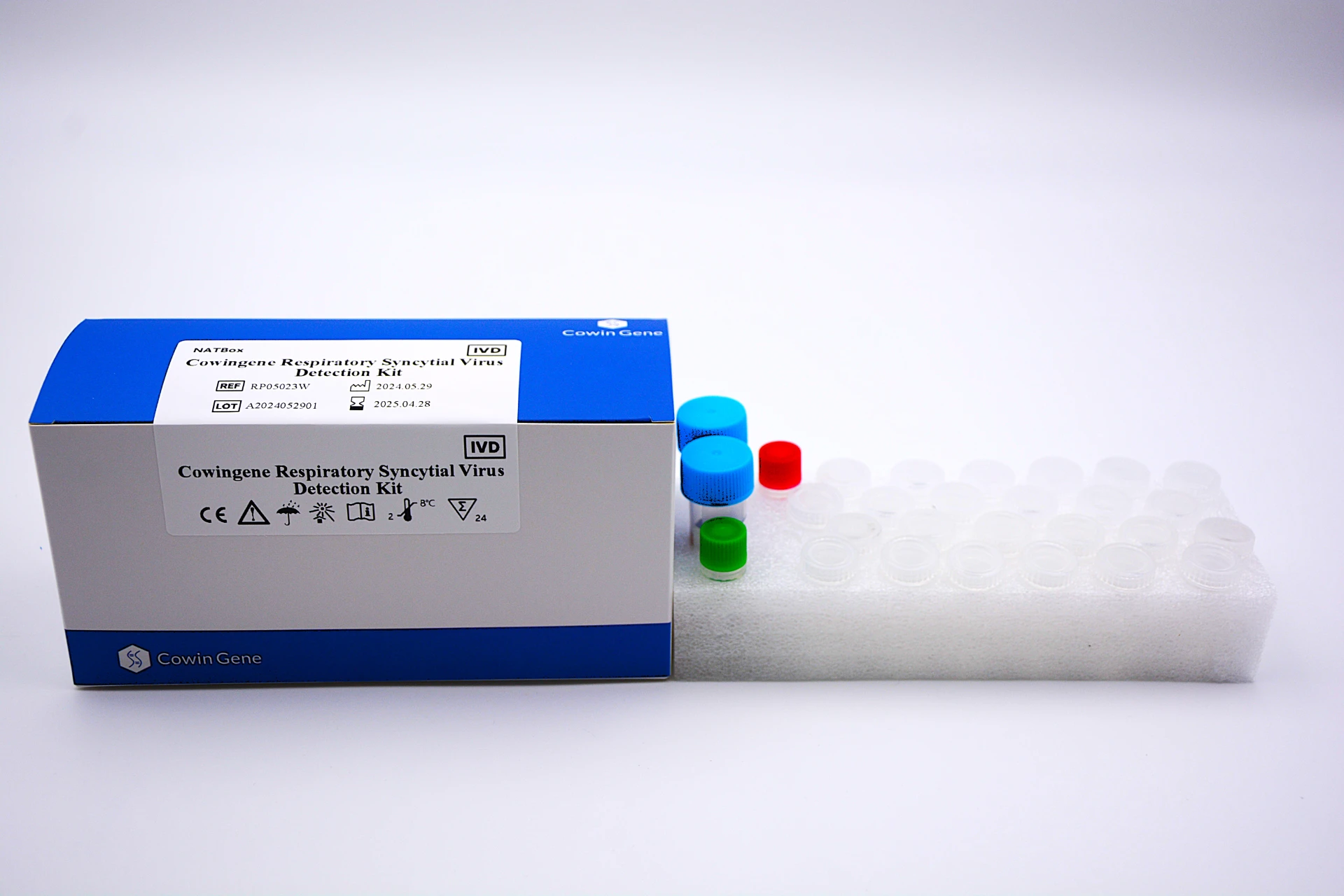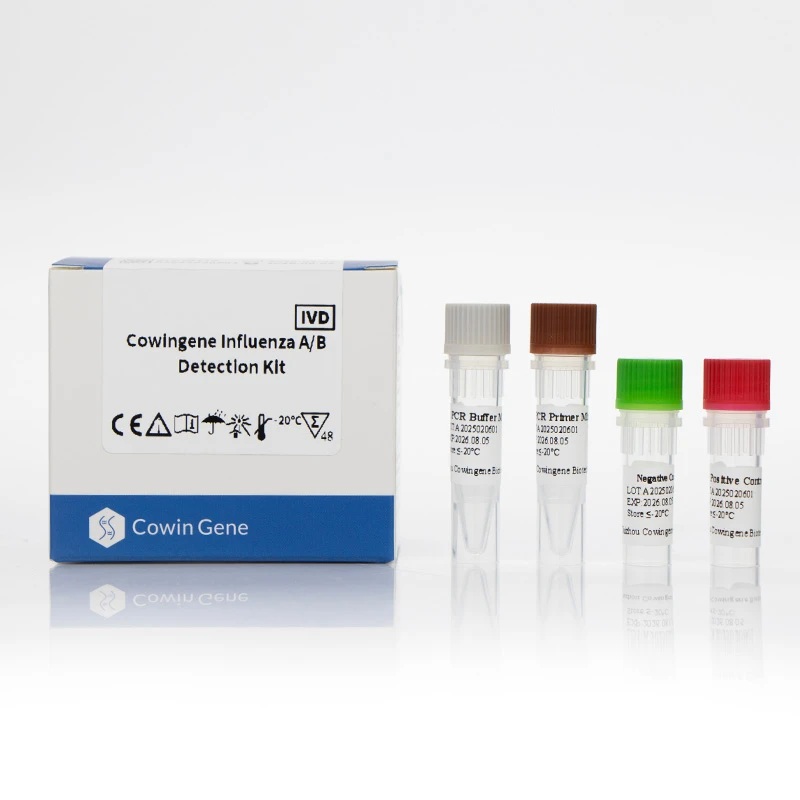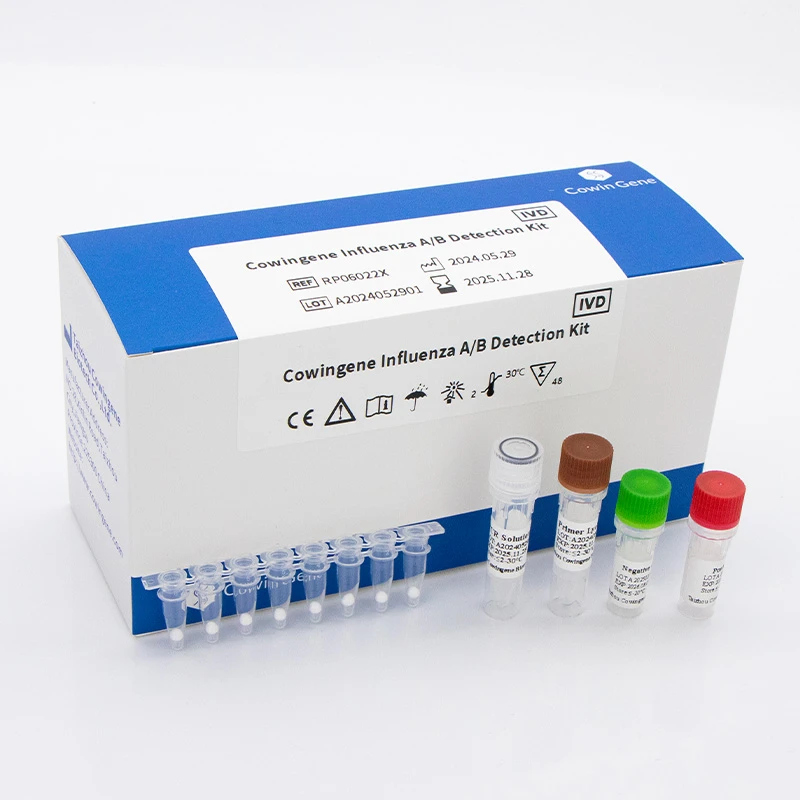In the evolving landscape of global public health, the rapid and accurate identification of respiratory pathogens is paramount. A comprehensive respiratory panel lab test, also known as a respiratory pathogen panel, has emerged as a cornerstone diagnostic tool. These advanced molecular tests allow for the simultaneous detection of multiple viral and bacterial pathogens from a single patient sample, significantly improving diagnostic turnaround times, optimizing patient management, and aiding in infection control measures. This article delves into the intricacies of these vital diagnostic tools, highlighting industry trends, technical capabilities, application scenarios, and the specific advantages offered by cutting-edge solutions like the Cowingene Legionella Pneumophila Detection Kit (NATBox).
Industry Trends and the Growing Demand for Respiratory Panel Lab Solutions
The past decade has witnessed a dramatic shift in respiratory disease diagnostics. Traditional methods, often reliant on individual culture or PCR tests for specific pathogens, were time-consuming and could delay appropriate treatment, especially when co-infections were present. The rise of multiplex respiratory panel lab technologies addresses these challenges head-on. The global respiratory diagnostics market, valued at approximately USD 6.5 billion in 2022, is projected to reach USD 11.2 billion by 2030, exhibiting a compound annual growth rate (CAGR) of about 7.1%. This growth is primarily driven by:
- Increasing Incidence of Respiratory Infections: Seasonal influenza, RSV, and emerging pathogens like SARS-CoV-2 continue to pose significant public health burdens.
- Awareness and Adoption of Molecular Diagnostics: Healthcare providers are increasingly recognizing the superior sensitivity, specificity, and speed of molecular tests over conventional methods.
- Demand for Rapid and Comprehensive Diagnostics: The need for quick and accurate diagnosis to guide antimicrobial stewardship and infection control strategies.
- Technological Advancements: Continuous innovation in assay design, automation, and bioinformatics analysis.
A key trend is the move towards syndromic testing, where a single test identifies a broad range of potential causative agents. This approach minimizes diagnostic uncertainty, particularly for infections presenting with similar clinical symptoms, such as the common cold, flu, and COVID-19. The ability of a respiratory panel lab to provide a comprehensive picture from a single sample is revolutionizing clinical practice.
At the heart of a respiratory panel test for various pathogens lies advanced molecular biology techniques, primarily Quantitative Polymerase Chain Reaction (qPCR) or Next-Generation Sequencing (NGS). These methods detect the genetic material (DNA or RNA) of pathogens, offering high sensitivity and specificity.
Key Technical Parameters:
- Multiplexing Capability: The ability to detect dozens of pathogens simultaneously. Panels can range from detecting 3-5 common viruses to 20+ viruses and bacteria.
- Sensitivity: The lowest concentration of pathogen genetic material that can be reliably detected. High sensitivity ensures detection even in early stages of infection or with low viral loads.
- Specificity: The ability to accurately identify a specific pathogen without cross-reacting with non-target organisms or host DNA.
- Turnaround Time (TAT): The time from sample receipt to result reporting. Modern panels aim for TATs ranging from 1-3 hours for rapid point-of-care (POC) systems to 4-8 hours for high-throughput lab-based systems.
- Sample Type: Typically nasopharyngeal swabs, oropharyngeal swabs, bronchoalveolar lavage (BAL), or sputum.
- Automation Compatibility: Many systems are designed for integration with automated nucleic acid extraction and PCR setup platforms, minimizing manual labor and reducing contamination risk.
- Limit of Detection (LoD): A critical performance parameter, representing the smallest number of genome copies or infectious units per unit volume that a test can reliably detect. For diagnostic kits, this is often expressed as copies/mL or TCID50/mL.
Consider a typical respiratory panel lab based on multiplex qPCR. It involves:
- Sample Collection: Swabs are collected from the patient.
- Nucleic Acid Extraction: DNA/RNA is isolated from the sample, removing inhibitors.
- Reverse Transcription (for RNA viruses): Viral RNA is converted to cDNA.
- Multiplex PCR Amplification: Specific primers and probes designed to target unique sequences of multiple pathogens are used. Fluorescent signals are generated upon amplification.
- Data Analysis: Software interprets the fluorescent signals to identify and quantify detected pathogens.
The market offers various platforms, each with its strengths. Below is a comparison of some prevalent technologies used in a respiratory panel lab setting:
| Feature |
Multiplex qPCR Panels |
Microarray-based Panels |
Next-Generation Sequencing (NGS) Panels |
Point-of-Care (POC) Panels |
| Number of Targets |
Moderate (5-30) |
High (50+) |
Very High (Hundreds, novel pathogens) |
Low to Moderate (3-15) |
| Turnaround Time |
Fast (1-4 hours) |
Moderate (4-8 hours) |
Slow (12-48 hours) |
Very Fast (15-60 minutes) |
| Sensitivity/Specificity |
High |
High |
Very High (identifies variants) |
Good to High |
| Cost per Test |
Moderate |
High |
Very High (often for research/surveillance) |
Moderate to High |
| Equipment Complexity |
Moderate |
High |
Very High |
Low |
| Primary Use Case |
Routine clinical diagnostics, high-throughput labs |
Research, complex cases, large panels |
Outbreak surveillance, novel pathogen discovery, comprehensive profiling |
Emergency departments, clinics, rapid diagnosis |
| Automation Potential |
High |
Moderate |
Low to Moderate |
Built-in |
Application Scenarios and Technical Advantages
The versatility of the respiratory panel lab makes it indispensable across various healthcare settings:
- Clinical Diagnostics: Rapid differentiation of viral and bacterial infections in patients presenting with respiratory symptoms, enabling targeted therapy (e.g., avoiding unnecessary antibiotic use for viral infections). This is crucial in managing pneumonia, bronchitis, and bronchiolitis.
- Infection Control: Swift identification of pathogens helps prevent nosocomial transmission in hospitals and long-term care facilities, especially during outbreaks.
- Public Health Surveillance: Monitoring the circulation of respiratory viruses and bacteria in the community, aiding in vaccine development and public health interventions.
- Emergency Departments: Providing quick diagnostic answers to guide patient triage, isolation, and treatment decisions, reducing hospital stays and improving patient flow.
- Immunocompromised Patients: For patients with weakened immune systems, accurate and rapid diagnosis is critical to prevent severe outcomes from opportunistic respiratory infections.
- Pediatrics: Diagnosing respiratory infections in children, where symptoms can be non-specific and rapid identification of the causative agent is vital for appropriate management.
Technical Advantages:
A sophisticated respiratory panel test for multiple pathogens offers significant advantages:
- Speed: Dramatically reduces the time to diagnosis compared to traditional sequential testing.
- Accuracy: High sensitivity and specificity minimize false positives and negatives.
- Comprehensive Coverage: Detects a broad spectrum of pathogens in one run, including co-infections often missed by single-target tests.
- Resource Efficiency: Conserves sample volume, reagents, and labor compared to running multiple individual tests.
- Improved Clinical Outcomes: Faster diagnosis leads to earlier appropriate treatment, reduced hospitalizations, and decreased healthcare costs.
- Antimicrobial Stewardship: By differentiating bacterial from viral infections, these panels help reduce the inappropriate prescribing of antibiotics, thereby combating antibiotic resistance.
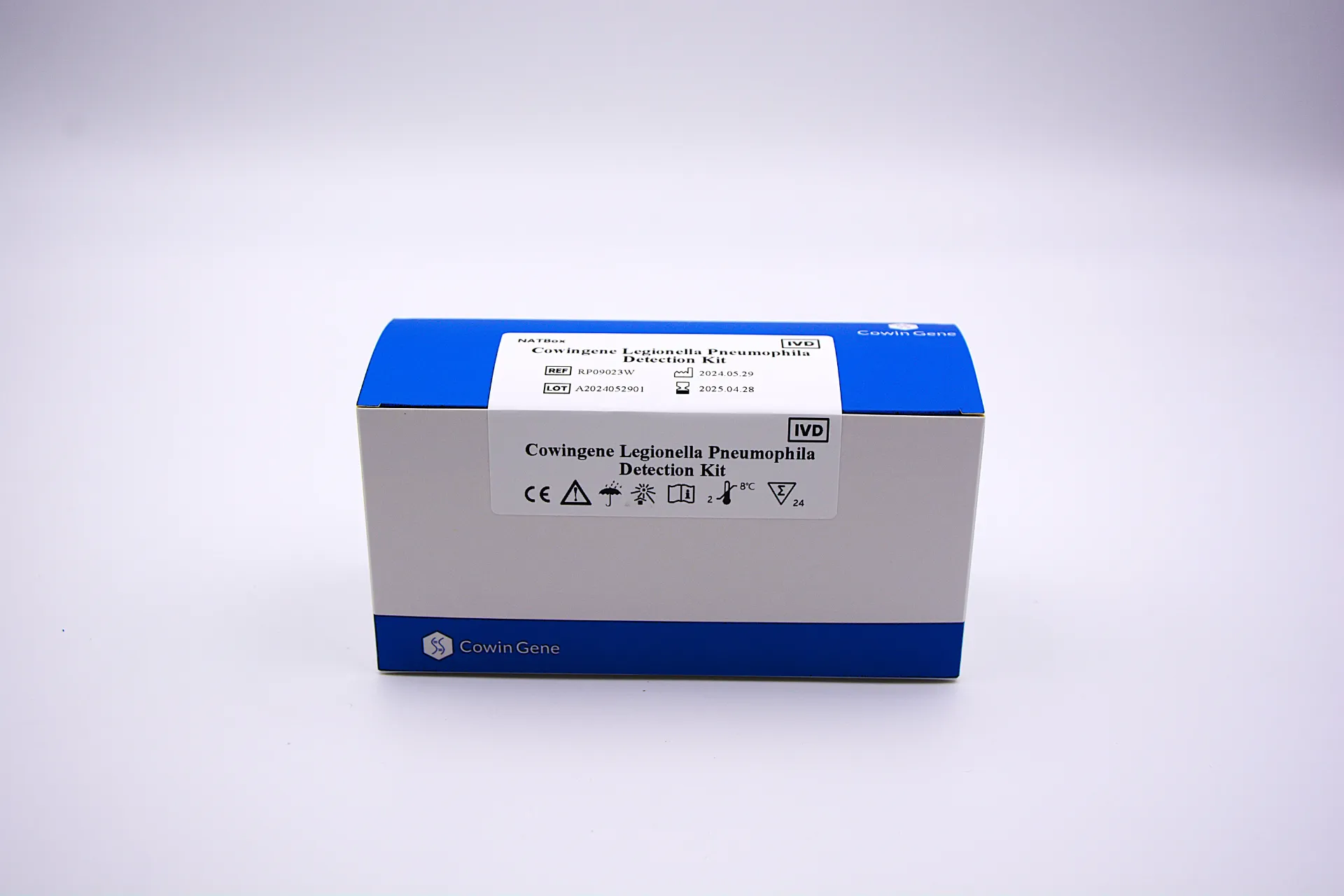
Figure 2: Example of a multiplex respiratory panel lab test result, indicating multiple detected pathogens.
Introducing Cowingene Legionella Pneumophila Detection Kit (NATBox)
While comprehensive respiratory panels cover a wide array of pathogens, specific detection kits remain crucial for targeted surveillance and diagnosis of particularly challenging or epidemiologically significant agents. The Cowingene Legionella Pneumophila Detection Kit (NATBox) is an exemplary product in this specialized niche. Legionella pneumophila is a bacterium responsible for Legionnaires' disease, a severe form of pneumonia, often associated with water systems in large buildings (e.g., hospitals, hotels). Rapid and accurate detection is critical for public health interventions and patient management.
Product URL: https://www.cowingene.com/cowingene-legionella-pneumophila-acn.html
Cowingene Legionella Pneumophila Detection Kit (NATBox) - Product Specifications:
| Parameter |
Specification |
| Product Name |
Cowingene Legionella Pneumophila Detection Kit (NATBox) |
| Target Pathogen |
Legionella pneumophila (specific genes) |
| Detection Method |
Real-Time PCR (qPCR) |
| Sample Type |
Respiratory samples (sputum, BAL, tracheal aspirates), environmental water samples (for surveillance) |
| Limit of Detection (LoD) |
Highly sensitive, typically
|
| Specificity |
No cross-reactivity with other common respiratory pathogens or non-Legionella bacteria (validated through extensive inclusivity/exclusivity testing). |
| Turnaround Time |
Approximately 1.5 - 2 hours from nucleic acid extraction to result. |
| Kit Components |
PCR Mix, Enzyme Mix, Positive Control, Negative Control, Internal Control (to monitor extraction and amplification). |
| Storage Conditions |
-20°C (for prolonged storage), suitable for cold chain logistics. |
| Shelf Life |
Typically 12-18 months from manufacturing date (as per product insert). |
| Applicable Industries/Settings |
Clinical Diagnostic Laboratories, Hospitals, Public Health Laboratories, Water Treatment Facilities, Environmental Monitoring Agencies, HVAC maintenance. |
Manufacturing Process and Quality Assurance for Diagnostic Kits
Unlike heavy machinery, the manufacturing of molecular diagnostic kits like the Cowingene NATBox involves highly specialized biochemical and molecular processes, demanding stringent quality control and sterile environments. The process ensures product integrity, reliability, and performance, critical for accurate clinical diagnosis.
🔬
1. Research & Development (R&D) and Assay Design
Initial phase involving identification of specific, conserved genetic targets (e.g., mip gene or 16S rRNA gene for Legionella) for high specificity. This includes bioinformatics analysis, primer/probe design, and initial in-vitro validation for analytical sensitivity and specificity.
↓
🧪
2. Raw Material Sourcing & Quality Control
Procurement of highly purified reagents (nucleotides, enzymes like Taq polymerase, synthetic oligonucleotides for primers/probes, internal controls) from certified suppliers. Each batch undergoes rigorous incoming QC to ensure purity, concentration, and absence of inhibitors.
↓
⚗️
3. Reagent Formulation & Master Mix Preparation
Under controlled cleanroom environments (e.g., ISO Class 7 or 8), individual reagents are precisely measured and blended into master mixes (e.g., PCR Mix, Enzyme Mix). This step is critical for batch-to-batch consistency and performance.
↓
📦
4. Filling, Aliquoting & Packaging
The formulated reagents are aseptically aliquoted into sterile vials or tubes. Automated systems are used to ensure precise volumes and prevent contamination. Kits are then assembled with positive and negative controls, internal controls, and instruction manuals, and packaged under temperature-controlled conditions.
↓
✅
5. Final Product Quality Control & Validation
Every manufactured lot undergoes comprehensive QC, including:
- Analytical Sensitivity & Specificity Testing: Using characterized reference materials and cross-reactivity panels.
- Reproducibility & Robustness Testing: Ensuring consistent performance across different instruments and operators.
- Stability Testing: Accelerated and real-time studies to determine shelf life under specified storage conditions.
- Clinical Validation: Performance evaluation using real clinical samples from diverse patient populations, comparing against gold standard methods.
This rigorous testing ensures compliance with international standards like ISO 13485 (Medical devices - Quality management systems), and relevant regulatory guidelines such as FDA (for IVDs in the US) or CE marking (for Europe).
↓
🚚
6. Distribution & Cold Chain Management
Finished kits are stored and transported under strict cold chain conditions (-20°C) to maintain reagent stability and efficacy until they reach the end-user laboratory.
The **Cowingene Legionella Pneumophila Detection Kit (NATBox)** embodies this commitment to quality, ensuring high reliability for critical diagnostic applications. Its robust design and validated performance contribute significantly to rapid detection of a key respiratory pathogen, aiding in both individual patient care and broader public health surveillance, particularly in settings prone to Legionella outbreaks (e.g., hospitals, industrial cooling towers, large public buildings). The expected usage lifespan of such a kit is tied to its shelf life, typically 12-18 months, during which its performance is guaranteed under specified storage and handling conditions.
Manufacturer Comparison and Customization Solutions
In the broader respiratory panel lab market, several key manufacturers offer diverse solutions. While Cowingene specializes in highly specific and robust detection kits like the NATBox for Legionella, other major players like Bio-Rad, Hologic, Luminex, and Seegene provide broader respiratory panels. The choice often depends on the specific needs of the laboratory:
- Throughput Requirements: High-volume labs might opt for fully automated systems, while smaller labs or point-of-care settings prioritize ease of use and rapid results.
- Target Range: Some labs need a broad panel for syndromic testing, while others require specific, highly sensitive assays for particular pathogens of concern (like Legionella).
- Budget Constraints: Cost-effectiveness, including reagent cost per test and instrument acquisition/maintenance, plays a significant role.
- Regulatory Compliance: Adherence to local and international regulatory standards (e.g., FDA, CE-IVD) is non-negotiable.
- Integration with LIS: Seamless integration with Laboratory Information Systems (LIS) for efficient data management.
Customized Solutions:
For large institutions, public health bodies, or research facilities, customized respiratory panel lab solutions are often sought. This might involve:
- Tailored Panels: Designing a panel to include specific regional pathogens or emerging threats not typically covered by off-the-shelf kits.
- Automation Integration: Developing protocols to adapt existing diagnostic kits to specific automated extraction or PCR platforms available in a lab.
- Workflow Optimization: Consulting services to streamline the entire diagnostic process, from sample accessioning to result reporting, to maximize efficiency and reduce turnaround times.
- Bulk Procurement & Logistics: Customized supply chain solutions for large-scale testing programs or national surveillance initiatives.
- Bioinformatics Support: Development of custom analysis pipelines for interpreting complex molecular data, especially for NGS-based panels.
Cowingene, with its expertise in molecular diagnostics, can collaborate on such customization, leveraging its R&D capabilities to meet specific client needs for targeted pathogen detection or integration into broader diagnostic workflows. Our focus on quality and precision makes us a reliable partner for specialized diagnostic requirements.
Application Cases and Client Experiences
The impact of accurate and timely respiratory panel lab testing is best illustrated through real-world applications. The Cowingene Legionella Pneumophila Detection Kit (NATBox) has been instrumental in numerous critical scenarios:
Case Study 1: Hospital-Acquired Pneumonia Outbreak Management
During a suspected outbreak of hospital-acquired pneumonia in a large metropolitan hospital, rapid identification of the causative agent was crucial. Traditional culture methods were slow, delaying infection control measures. The hospital implemented a diagnostic protocol using the Cowingene NATBox for suspected Legionella cases, alongside a broader **respiratory panel lab** for other pathogens. Within 2 hours of sample receipt, the NATBox provided a definitive positive result for Legionella pneumophila from multiple patient samples, including respiratory secretions and environmental water samples from a suspected cooling tower. This swift diagnosis enabled immediate isolation of affected patients, targeted antibiotic therapy, and rapid remediation of the hospital's water system. The hospital's infection control team credited the kit with significantly shortening the outbreak duration and preventing further patient morbidity, demonstrating the critical advantage of speed and accuracy.
Case Study 2: Public Health Surveillance Program
A regional public health laboratory integrated the Cowingene NATBox into its routine environmental surveillance program for water systems in high-risk public buildings (e.g., nursing homes, hotels, public fountains). Prior to using the NATBox, they relied on culture, which often took 10-14 days. With the NATBox, they could screen dozens of water samples daily, with results available within a single working day. This proactive monitoring allowed for early detection of Legionella contamination, enabling preventative maintenance and disinfection measures before an outbreak could occur. The lab reported a substantial reduction in the incidence of reported Legionnaires' disease cases in their jurisdiction over a two-year period, attributing it partly to their enhanced surveillance capabilities facilitated by the NATBox.
Client Feedback:
"The Cowingene Legionella Pneumophila Detection Kit has become an indispensable tool in our diagnostic arsenal. Its exceptional sensitivity and quick turnaround time allow us to confirm Legionnaires' disease cases rapidly, which is paramount for patient care and public health interventions. We've seen a measurable improvement in our diagnostic workflow since integrating it." - Dr. Chen, Head of Molecular Diagnostics, University Hospital.
Ensuring Trustworthiness: FAQ, Delivery, Warranty, and Support
Trust is foundational in diagnostics. Cowingene is committed to providing comprehensive support and transparency to its clients. Our adherence to stringent quality management systems, particularly ISO 13485:2016 for medical devices, underscores our dedication to product quality and regulatory compliance. We have been a reliable partner in the diagnostic industry for over a decade, serving clinical, public health, and environmental laboratories worldwide.
Frequently Asked Questions (FAQ):
Q1: What types of samples can the Cowingene Legionella Pneumophila Detection Kit (NATBox) be used with?
A1: The kit is validated for use with respiratory samples such as sputum, bronchoalveolar lavage (BAL), and tracheal aspirates. It can also be adapted for environmental water samples (e.g., cooling tower water, potable water) after appropriate sample concentration and DNA extraction methods.
Q2: How does the NATBox ensure specificity for Legionella pneumophila?
A2: The kit utilizes highly specific primers and fluorescent probes designed to target unique, conserved genetic sequences of Legionella pneumophila (e.g., the mip gene or specific 16S rRNA regions), ensuring minimal cross-reactivity with other bacterial species or human DNA. Extensive in silico and in vitro exclusivity testing is performed.
Q3: What equipment is required to run the NATBox kit?
A3: You will need a Real-Time PCR instrument capable of detecting FAM and VIC/HEX fluorescent channels, a nucleic acid extraction system (manual or automated), and standard laboratory equipment such as centrifuges, pipettes, and a biosafety cabinet.
Q4: What is an "Internal Control" and why is it important in a respiratory panel lab test?
A4: An Internal Control (IC) is a non-target nucleic acid sequence added to each sample before extraction and amplification. It serves as a process control to monitor the efficiency of nucleic acid extraction, the presence of PCR inhibitors in the sample, and the overall integrity of the amplification reaction. A valid IC signal ensures the test run was successful, even if no target pathogen is detected.
Q5: What are the typical turnaround times for ordering and delivery?
A5: Standard orders are typically processed within 2-3 business days. Delivery times vary based on location but generally range from 3-7 business days for international shipments, provided cold chain logistics are maintained. Expedited shipping options are available upon request.
Q6: What is the warranty and customer support policy for Cowingene products?
A6: Cowingene provides a warranty guaranteeing product performance as per specifications until the stated expiration date, provided proper storage and handling conditions are observed. Our dedicated technical support team is available via phone and email to assist with product usage, troubleshooting, and scientific inquiries. We also offer online resources and training modules.
Q7: How does Cowingene ensure regulatory compliance for its diagnostic kits?
A7: Cowingene operates under a certified ISO 13485:2016 Quality Management System. Our products undergo rigorous validation processes in accordance with international guidelines (e.g., IVDR in Europe) and are designed to meet or exceed performance criteria set by regulatory bodies. We are committed to transparency and provide comprehensive documentation for regulatory submissions.
Conclusion
The advent and continuous evolution of the respiratory panel lab have fundamentally transformed how respiratory infections are diagnosed and managed. From comprehensive syndromic panels to highly specific kits like the Cowingene Legionella Pneumophila Detection Kit (NATBox), these molecular diagnostic tools offer unparalleled speed, accuracy, and comprehensiveness. They are vital for improving clinical outcomes, guiding antimicrobial stewardship, and strengthening public health surveillance against both common and emerging respiratory threats. As the diagnostic landscape continues to advance, the commitment to scientific rigor, quality manufacturing, and robust validation, as exemplified by Cowingene, remains paramount to ensuring reliable and impactful solutions for global health.
References and Further Reading
- [1] Global Respiratory Diagnostics Market Size & Share Analysis - Growth Trends & Forecasts (2023 - 2028). Mordor Intelligence. https://www.mordorintelligence.com/industry-reports/respiratory-diagnostics-market (Accessed: October 26, 2023)
- [2] Ginocchio, C. C., & McAdam, A. J. (2019). Clinical Microbiology: Current Trends in Clinical Practice. Clinical Chemistry, 65(2), 273-288. https://academic.oup.com/clinchem/article/65/2/273/5602933
- [3] Loeffelholz, M. J., & Tang, Y. W. (2015). The promise of metagenomics in clinical microbiology. Clinical Chemistry, 61(1), 108-115. https://academic.oup.com/clinchem/article/61/1/108/5617267
- [4] World Health Organization. (2021). Laboratory testing for coronavirus disease 2019 (COVID-19) in suspected human cases: interim guidance, 2 March 2020. WHO. https://www.who.int/publications/i/item/laboratory-testing-for-2019-ncov-in-suspected-human-cases-20200117 (General guidance on respiratory diagnostics, principles applicable to panels)
























